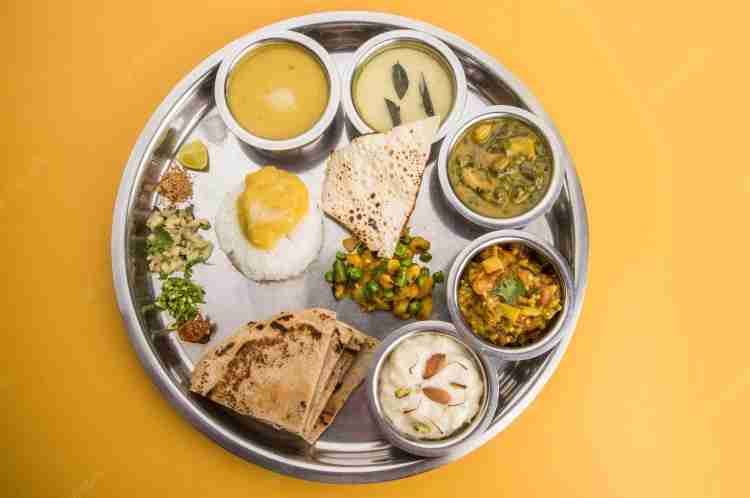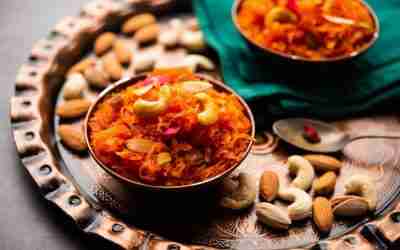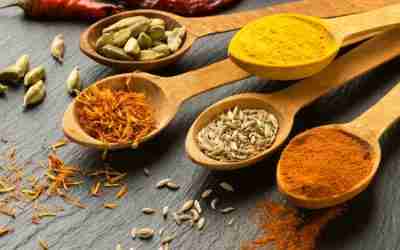Browse through the menu of any Indian restaurant, and you will definitely come across the word thali. When it comes to serving traditional Indian food, there are no courses. The food is served together on a steel plate – the thali. The dishes are not randomly put together on the thali; there is a nutritional science behind it. Regardless of the regional variances due, an authentic Indian thali is a nutritionally balanced meal. It has the perfect combination of carbohydrates, proteins, fats, vitamins, minerals, and fiber.
If you want to enjoy these healthy meals without the bother of having to cook them, Mealawe is the right choice for you. This homemade food delivery service offers you a range of thalis, including North Indian thali, Tamil Iyer thali, Gujarati thali, and non-vegetarian thali.
But before you do that, let us learn some more about the science behind the Indian thali.
According to Ayurveda, the presence of all six tastes in a meal are essential for a nutritious diet.
Having each of these tastes in a particular order also helps the digestive process. These six tastes are –
- Madhura – sweet
- Amla – salt
- Lavana – sour
- Katu – pugent
- Tikta – bitter
- Kashaya – astringent
Combining one grain, one lentil, some vegetables, sour chutney or pickle, curd, tempering, ghee, and spices makes the thali wholesome. Let us break these down further to analyze what makes thali the perfect nutritionally balanced meal.
Rotis/rice/dosa
Dishes like chapati, dosa, thepla, pulao, and khichdi are a must in every thali. These dishes contain carbohydrates from whole grains like wheat, makki, jowar, bajra, and rice. Whole grains contain complex carbohydrates, fiber, vitamins, and minerals like iron, selenium, magnesium, folic acid, riboflavin, thiamin, and niacin. They help reduce the risk of chronic diseases like heart disease, diabetes, colon cancer, and stroke.
Dal
Every thali contains dal cooked in some form. Some whole dals like green moong, horse gram, and chana are soaked and sprouted to make salads. Moong, masoor, urad rajma, lobia, and toor dal are some common dals used to prepare the thali. Dals contain fiber, vitamins, minerals, and protein.
Vegetables
No Indian thali is complete without a few vegetable dishes. You will find sarson ka saag in a Punjabi thali, a Bengali thali may contain Potol bhaja, a Gujarati thali will have shaak, and a Maharashtrian thali will contain batatyachi bhaji. The variety of vegetables in the thali provides phytonutrients and fiber. They help prevent micronutrient malnutrition, cardiovascular disease, cataract, and cancer.
Pickles
Pickle is an essential component of Indian meals. Some of India’s most commonly used pickles include mango pickles, gooseberry pickles, lemon pickles, carrot pickles, ginger pickles, garlic pickles, and onion pickles. Pickles are usually made by fermentation and are rich in nutrients and antioxidants required by the body.
Papad
The humble papad has a vital place in every Indian thali. Generally made from dried lentils, it can either be fried or roasted. It is a good appetizer. Roasted papads help absorb the fatty materials from the mouth. They are gluten-free and rich in protein and fiber.
Chutney
Chutney is integral to every Indian thali, be it Punjabi, Gujarati, or South Indian. Made from fresh herbs, vegetables, fruits, and spices, a chutney can add a zing to every meal. Tomato chutney, coconut chutney, mint chutney, or date tamarind chutney are popular accompaniments to meals and snacks. The sterol and flavonoids in chutney help in improving insulin sensitivity. They also provide probiotics, which increase good bacteria in the gut.
Curd/raita/ buttermilk
These milk-based foods are a part of the Indian thali. They cool the body and help meet the calcium requirement of the body. Curd has good bacteria that enable good digestion.
Non-vegetarian dishes
If you opt for a non-vegetarian thali, you will be treated to a wide variety of non-vegetarian dishes like butter chicken, fish gravy, prawn cadline curry, pork vindaloo, machher jhol, rogan josh, and yakhni. These dishes are rich in proteins.
Sweets
The Indian thali will satiate your sweet tooth as well. Since a limited amount is served in the thali, you need not worry about the calorie content too.
The average calorie content in a vegetarian thali
- Rice (1 cup)– 206 calories
- Chapati (1 unit)– 80 calories
- Dry vegetable dish ( 1 cup) – 150 calories
- Dal (1 cup) – 106 calories
- Raita (1 cup) – 46 calories
- Sweet (1 unit) – 150 calories
Total – 736 Calories
The average calorie content in a non-vegetarian thali
- Rice (1 cup)– 206 calories
- Chapati (1 unit)– 80 calories
- Chicken curry ( 200 gms) – 270 calories
- Dal (1 cup) – 106 calories
- Raita (1 cup) – 46 calories
- Sweet (1 unit) – 150 calories
Total – 858 calories
The bottom line
Indian cuisine varies from region to region as it uses local spices and herbs. However, the one unifying factor here is the use of thali to serve the food. Using a combination of locally sourced foods in the correct quantity and with the right spices yields maximum health benefits. So, go ahead and try this wholesome meal from Mealawe.




